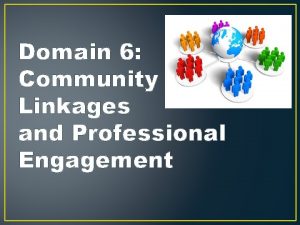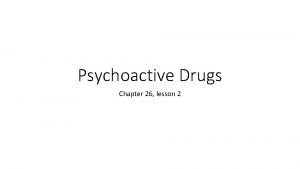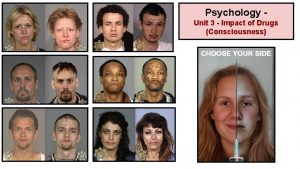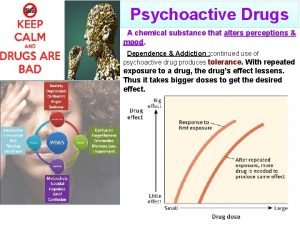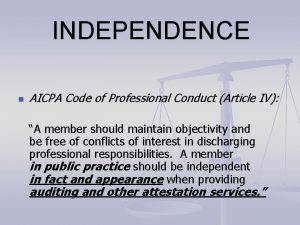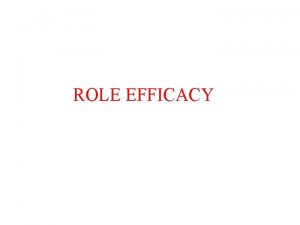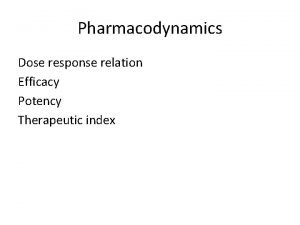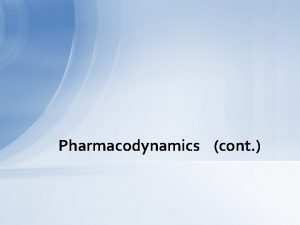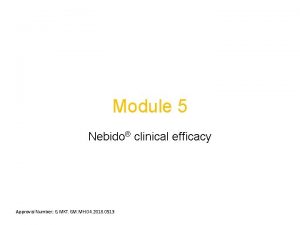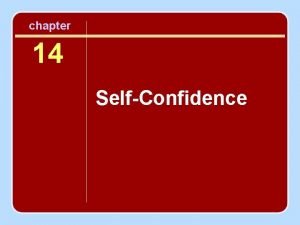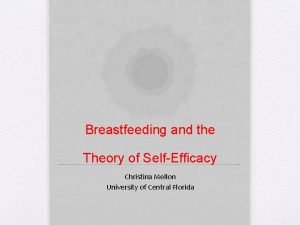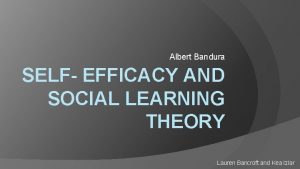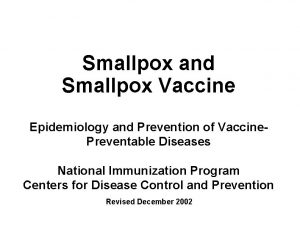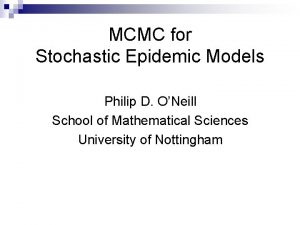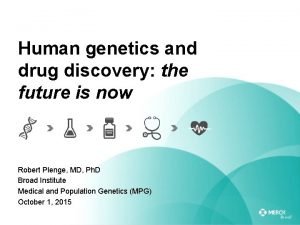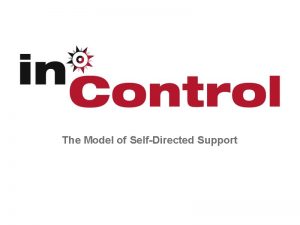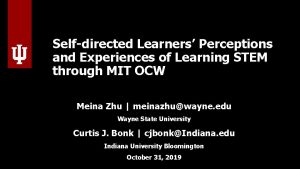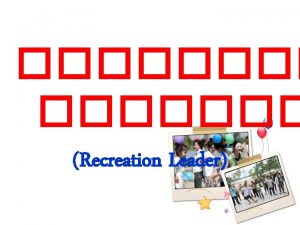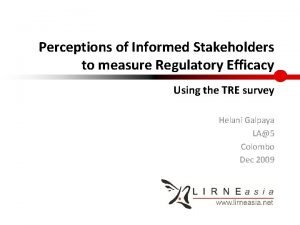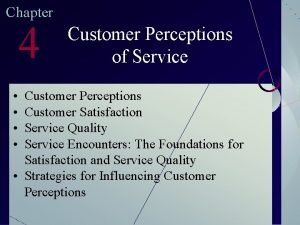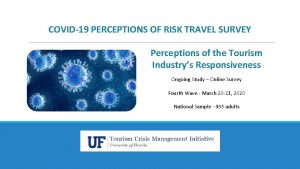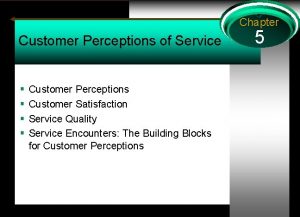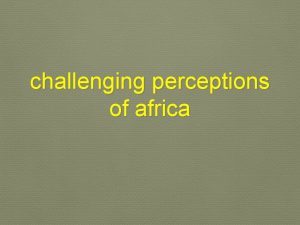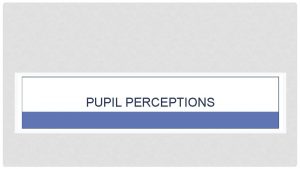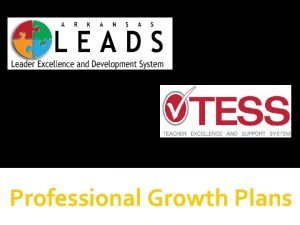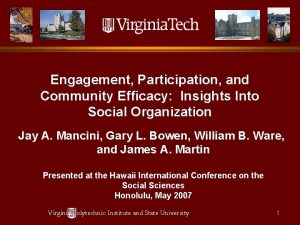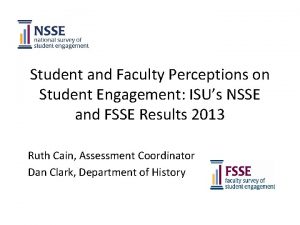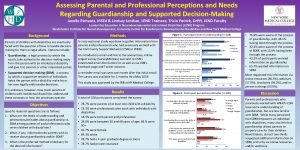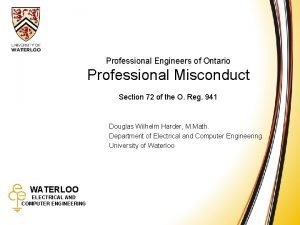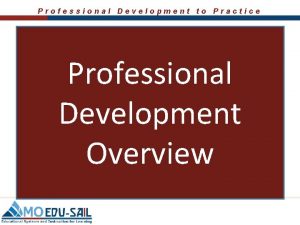Leader Efficacy Perceptions and Engagement in Selfdirected Professional
























- Slides: 24

Leader Efficacy Perceptions and Engagement in Self-directed Professional Development Lauren N. Johnson ONU Colloquium April 6 th, 2019

Self-Directed Professional Development 1 2 3 Employees are more productive and effective. Linked to time, resources, and organizational encouragement (Orvis & Ratwani, 2010) (Hurtz & Williams, 2009) Requires the individual to diagnose needs, formulate goals, identify resources and implement a strategy (Ellinger, 2004)

Problem: Self-appraisal influences individual behavior choices. • Self-appraisals can be influenced by individual perception biases (Tsai, & Wang, 2011). • Leaders hold strong beliefs about what is necessary for successful leadership (Murphy, 2002). Literature does not address self-perceived professional proficiency and engagement in self-directed professional development.

Purpose To explore the relationship between leader self-efficacy and engagement in self-directed professional development in order to gain a better understanding of the influence of self-perception on individual behavior within an organizational setting.

Functional Leadership Theory Human Capital Theory (Mc. Grath, 1962) (Becker, 1993) Emphasizes continuous improvement initiatives on the part of leaders (Ellinger, Yang, and Howton, 2002). Self-Directed Professional Development Motivator behind engagement in selfdirected professional development (Collin, van der Heijden, & Lewis, 2012).

Leader Self and Means Efficacy Theory Leadership is a social process involving others and resources (Eden, 2001). Leader Self-Efficacy Positive Psychologic al Capabilities Motivation Means and Resources Courses of Action Self-perceived ability to organize these elements for maximum effectiveness. (Hannah, Avolio, Luthans, & Harms, 2008).

Research Questions R 1: What is the relationship between leader self-efficacy, attitudes toward self-directed professional development activities, and participation in leader self-directed professional development activities? AND To what extent is this relationship moderated by: R 2: Gender? R 3: Professional Experience? R 4: Education Level?

Volatility Significance Professional development and leader self-efficacy literature Ambiguity Business Environment Uncertainty Organizations Organizational Leaders Complexity (Kinsinger & Walch, 2012)

Research Design Quantitative Research Design Explore whether engagement in self-directed professional development could (statistically) predict leader self-efficacy. Solicited organizational leaders with at least 2 direct reports Convenience Sampling 37 item electronically administered questionnaire

PARTICIPANTS Organization al Leaders 120 Organizational Leaders • 64 women and 56 men • At least 2 direct reports 183 216 Submitted Responses Organization Type: • • • For-profit Nonprofit Education Government Other 120 Useable Questionnaires Last Completed Level of Education: Range of Professional Experience: • High School through Terminal Degree (Ed. D, Ph. D) • Less than 1 year through 30+ years

Instruments Utilized Leaders Efficacy Questionnaire (LEQ) Demographic Information 22 item scale measuring self- Gender perceived leadership capacity Validated across seven diverse sample groups (Hannah & Avolio, 2013). Type of employing organization Last completed level of education Overall work experience Experience in current role

Self-Directed Professional Development Participation § Inventory created by the researcher*. § Collected participation within the last year. § Four broad activity categories *Reliability testing performed via pilot study of 18 organizational leaders Attitudes § Subscale of six Likert scale items § Adapted from a 2009 (peer- reviewed) study on physician self-assessment attitudes (Li, Favreau & West, 2009). )

Analytical Methods Research Question #1 Multiple Linear Regression What is the relationship between leader self-efficacy, attitudes toward self-directed professional development activities, and participation in leader self-directed professional development activities? Participation Leader Self-Efficacy Attitudes

Research Question #1: Findings Overall Result: R 2 =. 444, F(2, 117) = 46. 78, p <. 0001 Leader self-efficacy scores increased by 12. 61 points for every unit increase in attitude score. p=. 00 1 Attitud es p=. 97 3 Participatio n

Analytical Methods Research Questions #2 through #4 Potential Moderators Gender p=. 384 Education Level p=. 954 Professiona l Experience ? ? ?

Research Question #3 -Professional Experience Total Years in current Role Professional Experience Total Years Post Highschool Experience p=. 229 p=. 009 The effect of attitude on leader self-efficacy weakened at higher levels of total post-high school professional experience.

Conclusions Self Directed Professional Development Self-reported participation does not predict leader’s perceptions of self-efficacy Participation in such activities viewed differently from other professional accomplishments (i. e. implementation of a new program within a work setting) Leader Self-Efficacy Highly efficacious leaders are more likely to believe in the value of lifelong learning and ongoing self-assessment for organizational leaders. Lifelong professional experience plays a role in individual attitudes and beliefs within a work setting.

Professional Development Literature § Emphasis on individual attitudes § Self-selection of activities § Self-perception and organizational citizenship behaviors Implications Business Environment Leader development protocols Human resources function Organizational functionality

Sample Survey Design Use of New Instruments Self. Reported Data Limitations

Survey Design Sample • Focus on a single organization type • Examine a single area of leader selfefficacy Recommendations Use of New Instruments • New inventory for self-directed professional development Self. Reported Data • Indirect measures for attitudes related to professional development

Professional Experience and Leader Self-Efficacy Recommendatio ns- New Lines of Inquiry • Factors that cause leader selfefficacy to change over the course of a career Leader Self-Efficacy and Burnout • Merger of well-being literature with efficacy perceptions

REFERENCES Becker, G. S. (1993). Nobel lecture: The economic way of looking at behavior. Journal of Political Economy, 101(3), 385– 409. https: //doi. org/10. 1086/261880 Collin, K. , van der Heijden, B. I. J. M. , & Lewis, P. (2012). Continuing professional development. International Journal of Training and Development, 16(3), 155– 163. https: //doi. org/10. 1111/j. 1468 -2419. 2012. 00410. x Eden, D. (2001). Means efficacy: External sources of general and specific subjective efficacy. In M. Erez, U. Kleinbeck, & H. Thierry (Eds. ), Work motivation in the context of a globalizing economy (pp. 65– 77). Hillsdale, NJ: Lawrence Erlbaum. Ellinger, A. D. (2004). The concept of self-directed learning and its implications for human resource development. Advances in Developing Human Resources, 6(2), 158– 177. https: //doi. org/10. 1177/1523422304263327 Ellinger, A. D. , Yang, B. , & Howton, S. W. (2002). The relationship between the learning organization concept and firms’ financial performance: An empirical assessment. Human Resource Development Quarterly, 13(1), 5– 22. https: //doi. org/10. 1002/hrdq. 1010

REFERENCES Hannah, S. T. , Avolio, B. J. , Luthans, F. , & Harms, P. D. (2008). Leadership efficacy: Review and future directions. The Leadership Quarterly, 19(6), 669– 692. https: //doi. org/10. 1016/j. leaqua. 2008. 09. 007 Hannah, S. T. , & Avolio, B. J. (2013). Leader efficacy questionnaire. Menlo Park, CA: Mind Garden. Hurtz, G. M. , & Williams, K. J. (2009). Attitudinal and motivational antecedents of participation in voluntary employee development activities. Journal of Applied Psychology, 94(3), 635– 653. https: //doi. org/10. 1037/a 0014580 Kingsinger, P. , & Walch, K. (2012). Living and leading in a VUCA world. Retrieved From: http: //www. forevueinternational. com/Content/sites/forevue/pages/1482 /4_1__Living_and_Leading_in_a_VUCA_World_Thunderbird_School. PDF

REFERENCES Li, S. T. T. , Favreau, M. A. , & West, D. C. (2009). Pediatric resident and faculty attitudes toward self-assessment and self-directed learning: A cross-sectional study. BMC Medical Education, 9(1), 16. https: //doi. org/10. 1186/1472 -6920 -9 -16 Mc. Grath, J. E. (1962). Leadership behavior: Some requirements for leadership training. Washington, DC: U. S. Civil Service Commission, Office of Career Development. Murphy, S. E. (2002). Leader self-regulation: The role of self-efficacy and multiple intelligences. In R. E. Riggio, S. E. Murphy, & F. J. Pirozzolo (Eds. ), LEA’s organization and management series: Multiple intelligences and leadership (pp. 163– 186). Mahwah, NJ: Lawrence Erlbaum. Orvis, K. A. , & Ratwani, K. L. (2010). Leader self-development: A contemporary context for leader development evaluation. Leadership Quarterly, 21(4), 657– 674. https: //doi. org/10. 1016/j. leaqua. 2010. 06. 008 Tsai, M. T. , Tsai, C. -L. , & Wang, Y. C. (2011). A study on the relationship between leadership style, emotional intelligence, self-efficacy and organizational commitment: A case study of the banking industry in Taiwan. African Journal of Business Management, 5(13), 5319– 5329.
 Transformational leader and transactional leader
Transformational leader and transactional leader Community linkages and professional engagement example
Community linkages and professional engagement example Drug that alters moods, thoughts, and sense perceptions
Drug that alters moods, thoughts, and sense perceptions Drugs that alter moods thoughts and sense perceptions
Drugs that alter moods thoughts and sense perceptions Psychedelic drugs that distort perceptions and evoke
Psychedelic drugs that distort perceptions and evoke Chemical substance that alters perceptions and moods
Chemical substance that alters perceptions and moods Aicpa rule 101
Aicpa rule 101 Trustyourperceptions
Trustyourperceptions Self monitoring in organisational behaviour
Self monitoring in organisational behaviour Role efficacy
Role efficacy Therapeutic index
Therapeutic index Potency vs efficacy
Potency vs efficacy Testosterone injection dosage chart
Testosterone injection dosage chart Self confidence model
Self confidence model Conclusion of breastfeeding
Conclusion of breastfeeding Collective teacher efficacy
Collective teacher efficacy Collective teacher efficacy
Collective teacher efficacy Collective teacher efficacy
Collective teacher efficacy Albert bandura self efficacy
Albert bandura self efficacy Vaccine efficacy
Vaccine efficacy Vaccine efficacy
Vaccine efficacy Drug efficacy
Drug efficacy Luminous efficacy comparison chart
Luminous efficacy comparison chart Drug efficacy
Drug efficacy Slidetodoc.com
Slidetodoc.com

